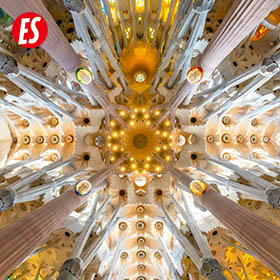
Basilica Of The Sagrada Familia360
A Masterpiece of Gaudi's Life's Work
Cologne Cathedral360
600 Years of ConstructionSt. Mark's Square And St. Mark's Basilica360
100 Meter High Landmark Clock TowerSt. Peter's Basilica And St. Peter's Square360
The Greatest of All Churches of ChristendomFlorence Cathedral360
The Marvelous Great DomeSt. Stephen's Cathedral360
National Symbol of AustriaBasilica di Santa Maria Maggiore360
The First Church for Virgin Mary- More
#Church

Eiffel Tower360
Centennial of the French Revolution
Arc de Triomphe360
Emblem of Paris CityTokyo Tower360
Symbolic Landmark of TokyoBrandenburg Gate And Pariser Platz360
Symbol of German ReunificationOriental Pearl Radio And TV Tower360
Pearls by Huangpu RiverPetronas Twin Towers360
Icon of Modern Malaysia- More
#Landmark
- Architecture
- #Heritage
- #Ancient ArchitectureHOT
- #Modern Architecture
- #Imperial
- #Palace
- #The Nine-Dragon Screen
- #Bell Tower & Drum Tower
- #Historic
- #Historic District
- #City Wall Tower Gate
- #TenshuNEW
- #The Great Wall
- #Fort
- #Guild Hall
- #Traditional Academy
- #Dwelling & Courtyard
- #Western Mansions
- #TulouNEW
- #Draft Bank
- #TombNEW
- #Imperial Tombs
- #Macau Historic Center
- #Three Lanes and Seven Alleys
- #The Center of Heaven and Earth
- #The West Lake
- #Chinese Gardens
- #Suzhou Gardens
- #Japanese Garden
- #Famous Japanese Castles
- #Ancient Kyoto ArchitecturesHOT
- #Ancient Nara Architectures
- #Ancient RomeHOT
- Life
- City
- Nature
- History
- Art & Culture
- Transport
- People
- Faith
- #Religion
- #Buddhism
- #Zen Buddhism
- #Great BuddhaHOT
- #Guanyin
- #Arhats
- #Bodhidharma
- #Pagoda
- #Pagoda Forest
- #Tibetan Style Pagoda
- #Five-Storeyed Pagoda
- #Famous Temples in China
- #Famous Temples in Japan
- #Shaolin
- #Taoism
- #Ancestral Hall
- #Guan Yu Temple
- #Confucian Temple
- #Mazu
- #Shinto Shrines
- #Tenmangu Shrines
- #Sengen Shrines
- #Hachiman Shrines
- #Inari Shrines
- #Toshogu Shrines
- #Faith of Mount Fuji
- #OtoriiNEW
- #IslamNEW
- #HinduismNEW
- #Church
- #Roman CuriaNEW
































